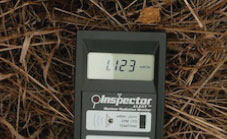Uranium Mine Remediation
Romanovka
The village of Romanovka is located 50 km from the Talakan uranium mine. Uranium concentrates are transported across the River Vitim by ferries and cargo boats. Some of the mine’s abandoned ditches, known to be radioactive, were exposed to the open air for years, and studies showed a correlation between air- and water-borne exposure to this uranium supply and a cancer cluster in the local community. However, as is frequently the case with mining in low- and middle-income regions, there had been no technical documentation throughout this mine’s history; therefore, proving a causal link was difficult. The village is also located just 1.5 km from other natural uranium deposits, and residents are known to raise crops and livestock in those zones.
Project Strategies
To assist in the monitoring and evaluation process, Blacksmith Institute provided technical expertise and resources to measure the concentration and exposure levels at this site. This included providing radiometers and training local partners in their use; mapping the district for canals, ditches, and other zones of high radioactivity; and providing heavy earthmoving equipment (bulldozers, excavators, and front-loaders) necessary to seal or remove the contaminated soil.
In August of 2006, Blacksmith Institute’s local partner—the specialists of the Baikal Center for Public Environmental Expertise—visited and examined the site in order to judge the severity of radiation and the effectiveness of proposed solutions. This kind of radioactivity output is measured in micro-Roentgens per hour (mR/h). According to the data from the Baikal Center for Public Environmental Expertise, the levels of radiation in two ditches near the mine were 800 and 2,350 μR/h. Surrounding the ditches for an area of 100 m was a zone of increased radiation levels, which tested at 50-75 μR/h. The background radiation levels a person will encounter in a major city are approximately 10-15 μR/h. A common safety threshold for long-term exposure is 35 μR/h.

The small Holoy River washes away uranium deposits near the surface in this region. River sediments closest to these deposits showed high radioactivity, 500-600 μR/h. Vegetation in the Holoy exhibited elevated levels of both uranium and thorium. Likewise, the uranium deposits had contaminated other small local water bodies. Based on this information, Blacksmith’s Technical Advisory Board recommended sealing the toxic ditches and educating villagers about these hazards.
Outcomes and Follow-Up
On September 9, 2006, the specialists and volunteers of the Baikal Center, in the presence of local administration and environmental committee staff, covered the two hazardous ditches with fresh and safe soil. The Center also conducted a teaching workshop to educate community members about potential health risks, raise public awareness of mining impacts, and recommend personal steps to avoid future exposure.
Future monitoring of the site will be necessary to make sure no new hazardous ditches or radiation accumulation threaten public health. Locals should be encouraged to practice farming as far from the ground-level uranium deposits as possible.



